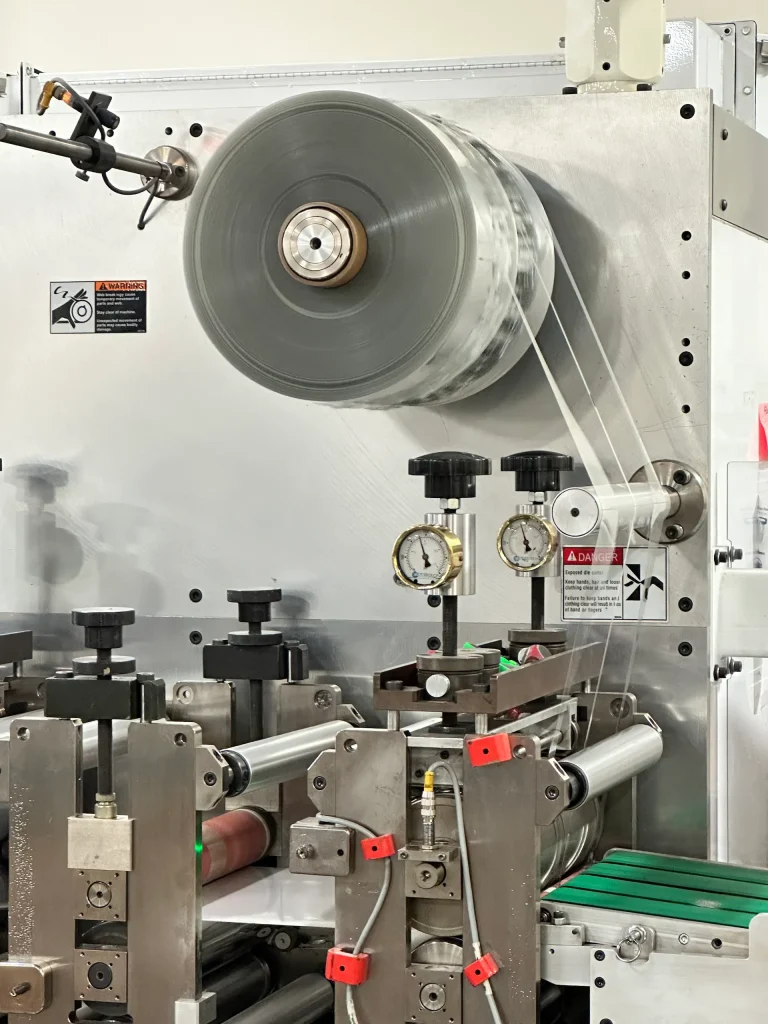
At Colvin-Friedman, we have decades of experience when it comes to precise fabric die cutting needs. We serve the apparel, industrial, and automotive markets with a multi-step process that ensures all die designs produce the exact results that our customers need across a broad variety of fabrics. Get a quote today to learn how versatile, efficient, and customizable our work can be.
When it comes to fabric, there are very few limits on what can be cut, outside of certain protective materials like Kevlar™ and others specifically designed to resist abrasion. While we are generally able to cut any fabric type, here are some of the industries we work with periodically:
Apparel
Automotive
Home Furnishings
Industrial
Pattern pieces for garments, appliques, and patches
Seat covers, upholstery, interior trim, filters, and gaskets
Protective gear and uniform piece cutting, filters, insulation materials with tight tolerances
Furniture pieces, shaped cushions, decorative elements similar to apparel
Or call Josh at (707) 769-4488
With 75 years of experience working with fabrics, we understand how crucial it is for supplier and customer to be on the same page. With variability in the types of dies required for thicker and stronger fabrics, as well as the differences in tensionability, making sure everyone is on the same page can make the difference between a successful project and one with major delays.
To keep things running smoothly, we’ve developed the Colvin-Friedman Process for die cutting to ensure that our customers receive the best quality in results and service. It works like this:
We discuss project requirements, budget, lead time to assess what type of die cutting makes the most sense.
An expert die maker produces a prototype to suit the fabric and run size needs of the project.
Colvin-Friedman and you agree on terms for production amounts, quality control, and any shipping integration.
Per contract, we are happy to provide any number of sample cut materials for your review to ensure maximum quality.
Colvin-Friedman stays in constant contact regarding production numbers and to discuss any unlikely issue.
Colvin-Friedman uses its extensive inventory management system experience to ensure components are integrated into your supply chain.
Here’s a table outlining some of the most common fabrics and the key considerations for die cutting each:
Cotton
Polyester
Cotton-Polyester Blend
Nylon
Silk
Spandex/Elastane
Natural fiber, breathable, versatile
Synthetic, durable, wrinkle-resistant
Combines properties of both fibers
Strong, elastic, resistant to wear and tear
Delicate, smooth, natural fiber
Highly elastic synthetic fiber
When planning your fabric die cutting project, consider these material-specific factors:
At Colvin-Friedman, our experts are well-versed in handling a wide variety of fabrics. We’ll work with you to determine the best die cutting approach for your specific material and project requirements.
Or call Josh at (707) 769-4488
Choosing the right die for your fabric cutting project is paramount in terms of optimizing cost and quality. At Colvin-Friedman, we offer several types of dies for fabric cutting:
Best For
Production Speed
Precision
Complexity of Cuts
Typical Run Sizes
Setup Time
Material Waste
Edge Finishing
Thicker fabrics, multiple layers
Medium
High
Simple to Complex
1,000 – 100,000+ pieces
Short to Medium
Low to Medium
Clean Cut
High-volume, lightweight fabrics
Very High
High
Simple to Moderate
100,000+ pieces
Long
Low
Clean Cut
Leather, thick fabrics
Medium
High
Simple to Moderate
1,000 – 50,000 pieces
Short
Low to Medium
Clean Cut
The precision of fabric die cutting is unmatched due to the use of custom dies designed specifically for the fabric type and the complexity of the required cut.
We can cut virtually any fabric, including delicate materials like silk and robust materials like nylon. Special considerations may be needed for some high-stretch or high-strength fabrics.
Yes, we provide prototyping services to ensure that your final product meets your design specifications before full-scale production begins.
Yes, we have extensive experience working with various inventory management systems to ensure seamless integration with your existing supply chain.
If you would like more information about our custom die-cutting services, process, or product capabilities, please use the number below to call our Vice President, Josh Rodman. If you would like to receive a free project quote, click the button below.
Or call Josh at (707) 769-4488
We have been a leading provider of die cutting services for over 75 years. Trust us to provide the customer service of a small business with the capabilities of a large organization.
1311 Commerce Street • Petaluma, CA 94954
Copyright © 2025 Colvin Friedman Company. All Right Reserved.